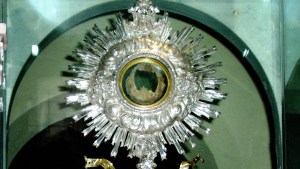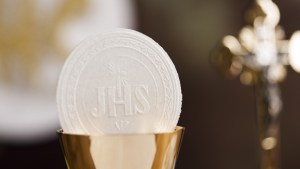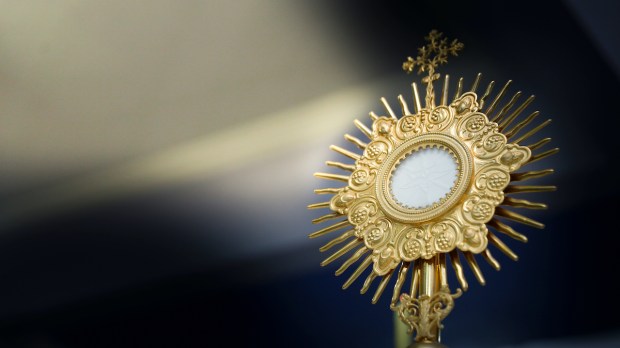Lenten Campaign 2025
This content is free of charge, as are all our articles.
Support us with a donation that is tax-deductible and enable us to continue to reach millions of readers.
During the 13th century in Altari, Italy, a young woman was heartbroken. She lost the love of her life and was determined to win him back. This woman was willing to do anything and not being able to convince him with words, she sought out someone who could forcibly change his mind.
The young woman found a sorceress and begged her for anything that would bring this man back to her.
The sorceress had an idea. She would make a love potion for the woman, but needed a vital ingredient: a consecrated host.
Desperate, the young woman attended the next Mass at the local cathedral and approached the priest to receive communion on her tongue. The priest placed the Eucharist on her tongue, but the woman kept it in her mouth, turned around and when she was out of sight, spit the host back out on a piece of cloth.
She kept it in the cloth, walked back home, and kept the host and cloth until she was able to visit the sorceress again. After three days she picked the cloth back up again to check on the host. What she discovered was not the white host she originally had.
Instead, the young woman found a bleeding part of flesh and realized that the host was transformed physically into the Body and Blood of Christ. She rushed back to the Church and repented of her sin. The sorceress also repented and both women were converted after such a miracle. One could say that she fell under the “spell” of the true “love potion” of God’s presence in the Eucharist.
Pope Gregory IX investigated the miracle at the time and saw it as a visible sign against the various claims that Jesus was not present in the Eucharist. It confirmed for him and those who witnessed it that Jesus was truly present in the Eucharist, body, blood, soul and divinity. The miracle coincided with other similar events around Europe and helped pave the way to the institution of the Feast of Corpus Christi, which entreated the faithful to believe with ardent faith in the unseen miracle that occurs every time the Mass is offered.
The bleeding host is still preserved in the Cathedral of Altari and is on display in a monstrance. It remains as a reminder of Jesus’ undying love for all humanity in the Most Blessed Sacrament of the altar.

Read more:
4 Incredible Eucharistic miracles that defy scientific explanation

Read more:
When a satanic follower tried to steal the Eucharist
Read more:
Juliana of Liege, the 13th-century religious woman who brought us Corpus Christi

